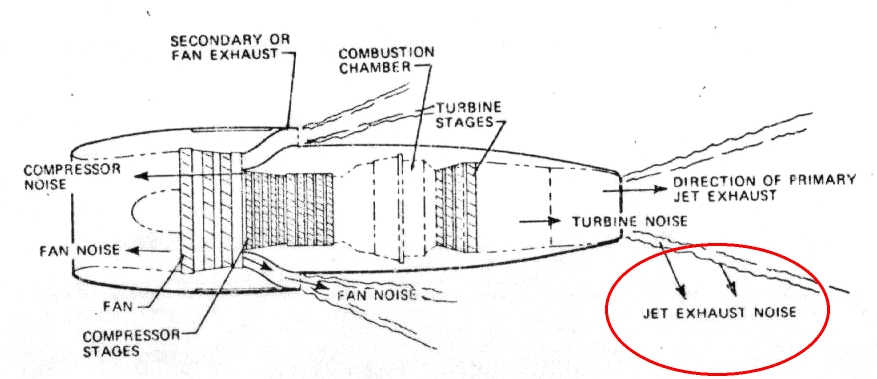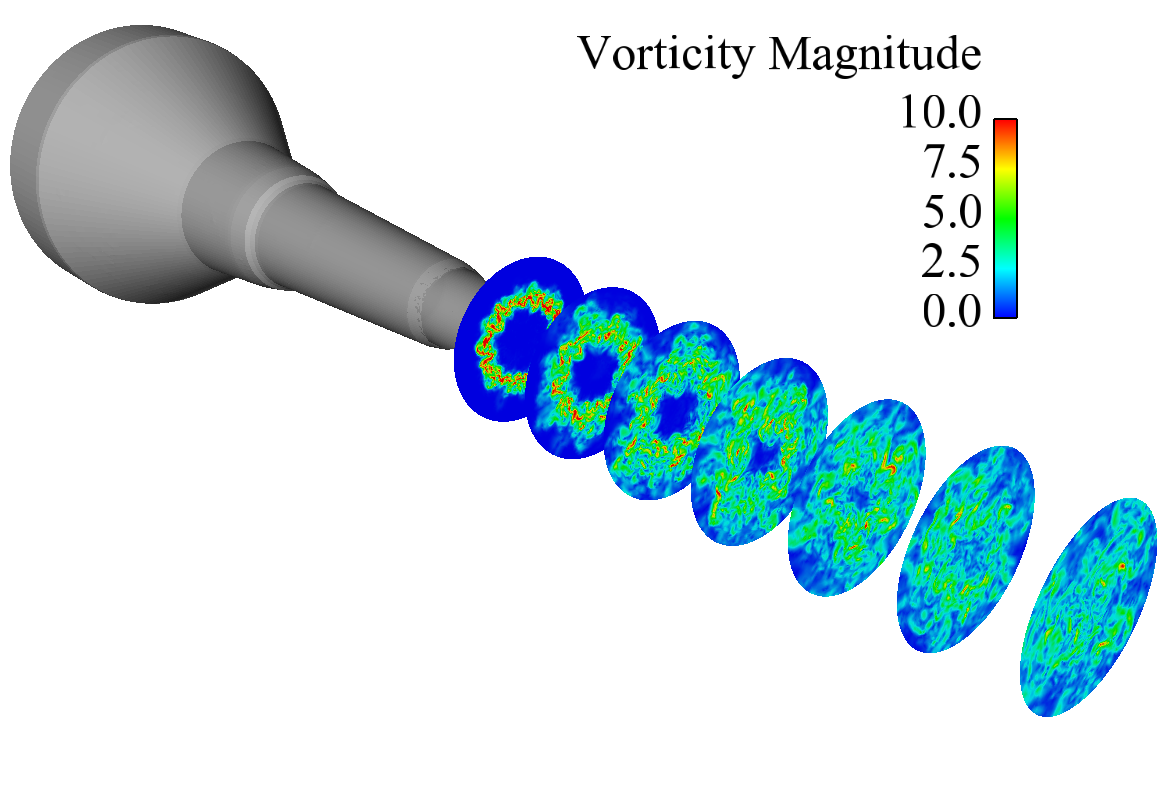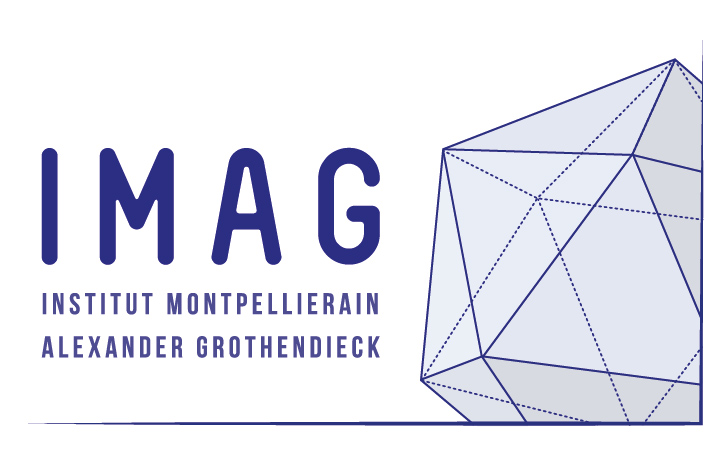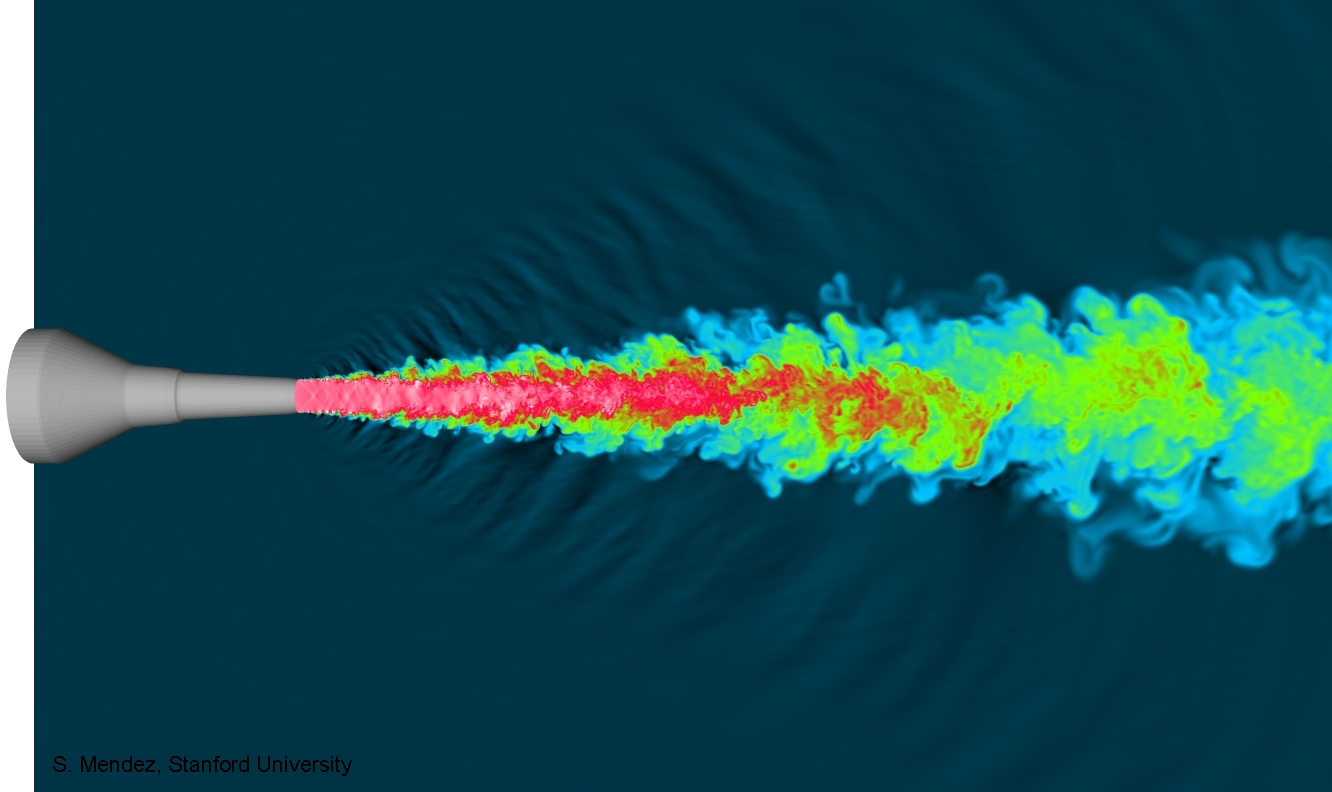Research: jet noise
I stayed one year at the Center for Turbulence Research, in Stanford University, as a post-doctoral fellow. I was hired to work on a contract with NASA concerning supersonic jet noise.
Jet noise is the model for the noise generated at the exhaust of aircraft engines. Indeed, the expulsion of high-speed hot gases by the engines is one of the main components of aircraft noise. I found this page quite interesting and compact in terms of aicraft noise. The following figure, extracted from the page just mentioned, notably shows the jet exhaust noise. When studying jet noise, one generally studies a simplified model of such noise, ignoring geometrical details, the influence of turbine stages a more genrally the fact that the flow exhiting the engine is complex, etc. However, understanding simplified jet noise is of course the first step before handling the complete jet exhaust noise.
Jet noise is the model for the noise generated at the exhaust of aircraft engines. Indeed, the expulsion of high-speed hot gases by the engines is one of the main components of aircraft noise. I found this page quite interesting and compact in terms of aicraft noise. The following figure, extracted from the page just mentioned, notably shows the jet exhaust noise. When studying jet noise, one generally studies a simplified model of such noise, ignoring geometrical details, the influence of turbine stages a more genrally the fact that the flow exhiting the engine is complex, etc. However, understanding simplified jet noise is of course the first step before handling the complete jet exhaust noise.

Schematic of the noise components related to the engine.
As the noise radiated increases with the flow velocity, this noise is extremely important for supersonic airplanes. Indeed, one of the major obstacles for supersonic civil aircraft is the noise that such an airplane would generate. A supersonic aircraft built today would not comply with the strict regulations imposed over the last years near airports. Research is thus needed in order to decrease the noise radiated by supersonic aircrafts. This is the motivation for the present study.
To support the development of innovative noise-reducing strategies, one can rely on numerical simulations. Accurate Computational Fluid Dynamics (CFD) would enable the prediction of the noise radiated by a jet, whatever the flow and geometrical conditions. A promising techique is to use Large-Eddy Simulations (LES) to simulate the jet flow, coupled with an acoustic propagation solver to determine the noise seen in the far field. The objective of my postdoc was to participate to the development of a numerical plaform dedicated to supersonic jet noise. It consists of two main elements: an unstructured solver (able to account for complex geometries) and a solver of the Ffowcs-Williams and Hawkings (FWH) equation for the noise prediction far from the jet.
Two (almost) perfectly-expanded jets have been considered, at Mach number M=1.4: one unheated and on heated. My work has consisted in validating our numerical platform by comparison with experimental data, experimental data from the NASA Glen Research Center being available in the two cases considered. The following image illustrates the development of the jet from the nozzle exit and the movie shows the noise radiated in the heated case by animating the density field.

In terms of results, this study has shown the excellent behavior of the unstructured code (see the publications) to reproduce the flow physics and the noise radiated in the far field, as illustrated by the following figure. The AIAA Journal article published in 2012 details the assessment of the uality of the results.
details the assessment of the uality of the results.

This jet noise study has also enabled us to write a detailed technical report on the post-processing of the LES of jets using the FWH solver. Anybody interested in practical details (good practices, numerical recipes) on the topic, is referred to the Annual Research Brief of the Center for Turbulence Research I wrote in 2009 and to the IJA paper derived from the brief and published in 2013.
and to the IJA paper derived from the brief and published in 2013.
Large-Eddy Simulations of supersonic jet noise
To support the development of innovative noise-reducing strategies, one can rely on numerical simulations. Accurate Computational Fluid Dynamics (CFD) would enable the prediction of the noise radiated by a jet, whatever the flow and geometrical conditions. A promising techique is to use Large-Eddy Simulations (LES) to simulate the jet flow, coupled with an acoustic propagation solver to determine the noise seen in the far field. The objective of my postdoc was to participate to the development of a numerical plaform dedicated to supersonic jet noise. It consists of two main elements: an unstructured solver (able to account for complex geometries) and a solver of the Ffowcs-Williams and Hawkings (FWH) equation for the noise prediction far from the jet.
Two (almost) perfectly-expanded jets have been considered, at Mach number M=1.4: one unheated and on heated. My work has consisted in validating our numerical platform by comparison with experimental data, experimental data from the NASA Glen Research Center being available in the two cases considered. The following image illustrates the development of the jet from the nozzle exit and the movie shows the noise radiated in the heated case by animating the density field.

View of the development of an unheated supersonic jet from the nozzle exit
MOVIE: Animation of mass density in a heated supersonic jet at Mach 1.4
In terms of results, this study has shown the excellent behavior of the unstructured code (see the publications) to reproduce the flow physics and the noise radiated in the far field, as illustrated by the following figure. The AIAA Journal article published in 2012

Narrowband Sound Pressure Levels (in dB) with the observer at 100 nozzle diameters in the case of the unheated jet (left) and heated jet (right). Comparison of experimental results (black) and results reconstructed by LES + FWH solvers (color). Experimental and numerical results results are shifted by multiples of 20 dB to separate the graphs at different angles, from upstream angles (bottom, 50 deg) to downstream angles (top, 150 deg).
This jet noise study has also enabled us to write a detailed technical report on the post-processing of the LES of jets using the FWH solver. Anybody interested in practical details (good practices, numerical recipes) on the topic, is referred to the Annual Research Brief of the Center for Turbulence Research I wrote in 2009


